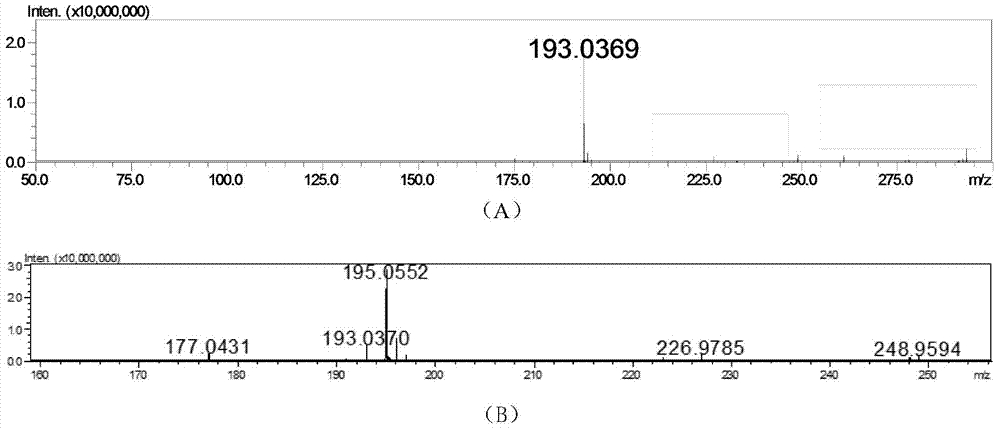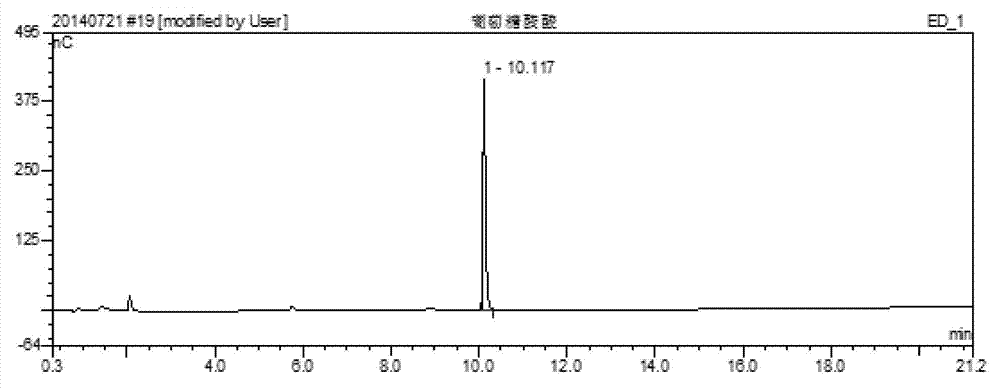Gluconacetobacter xylinus strain capable of producing free glucuronic acid
A technology of glucuronic acid and gluconacetobacter, applied in the direction of bacteria, microorganism-based methods, microorganisms, etc., to achieve the effects of easy popularization and application, high raw material utilization rate, and environmental protection
- Summary
- Abstract
- Description
- Claims
- Application Information
AI Technical Summary
Problems solved by technology
Method used
Image
Examples
Embodiment 1
[0028] The screening of embodiment 1 bacterial strain
[0029] (1) Strain screening
[0030] Take a small amount of kombucha fungus film to enrich in GY medium, culture at 30°C, 200r / min shaker for 48h, and then dilute to 10 -3 、10 -4 、10 -5 、10 -6 、10 -7 For 5 gradients, 200 μL of each diluted sample was applied to GYC solid medium containing 100 mg / mL natamycin, and each dilution gradient was repeated twice. Pick a single colony and incubate at 30°C for 72h. Select a single colony with a transparent circle and inoculate it on GY medium, cultivate it on a shaker at 30°C and 200 r / min until the logarithmic phase, collect samples and store it, collect the fermentation broth after 72 hours of cultivation, centrifuge, and take the supernatant for detection. A Q1 strain with higher yield was screened from many screened strains for further strain identification.
[0031] (2) Bacteria identification
[0032] The genomic DNA of the starting strain Q1 was extracted, and the 1...
Embodiment 2
[0036] Embodiment 2 Qualitative detection of glucuronic acid
[0037] After activation on the solid GY medium of Gluconacetobacter xylosus Q1, inoculate it into a 250mL Erlenmeyer flask containing 25mL of GY medium, culture it at 30°C and 200rmp / min for 72h, collect the fermentation broth, centrifuge, and take the The clear liquid was prepared for detection; the content of glucuronic acid in the fermentation liquid was detected by ion chromatography.
[0038]Determine the LC-MS spectrum of the glucuronic acid standard sample, and dilute the supernatant of the fermentation broth of G.xylinus Q1 by 10 times for LC-MS detection, and compare the two for spectrum analysis, as shown in figure 1 As shown, the molecular weight of the glucuronic acid standard sample was 193.0369 in the mass spectrometry scan at 2 minutes, and the sample detected substances with the same molecular weight (193.0370) at the same time, confirming that the fermentation broth contained glucuronic acid.
Embodiment 3
[0039] Determination of glucuronic acid detection method in embodiment 3 exopolysaccharide:
[0040] The bacteria were cultured in GY medium at 30°C and 200r / min for 72h, centrifuged at 8000rpm for 15min, and the supernatant was taken. Ethanol was added to the supernatant with 4 times the volume of the supernatant, and the mixture was kept at 4 °C overnight. The precipitate was collected by centrifugation at 8000r / min for 15 minutes. The precipitate was dried, and 0.5 mol / L H of 5 times the volume of the supernatant was added 2 SO 4 Solution, reacted at 70°C for 3h. The hydrolyzate was filtered through a 0.45 μm filter membrane, and the product was detected by LCMS. The detection result showed that the exopolysaccharide did not contain glucuronic acid.
PUM
| Property | Measurement | Unit |
|---|---|---|
| diameter | aaaaa | aaaaa |
Abstract
Description
Claims
Application Information
 Login to View More
Login to View More - R&D
- Intellectual Property
- Life Sciences
- Materials
- Tech Scout
- Unparalleled Data Quality
- Higher Quality Content
- 60% Fewer Hallucinations
Browse by: Latest US Patents, China's latest patents, Technical Efficacy Thesaurus, Application Domain, Technology Topic, Popular Technical Reports.
© 2025 PatSnap. All rights reserved.Legal|Privacy policy|Modern Slavery Act Transparency Statement|Sitemap|About US| Contact US: help@patsnap.com



